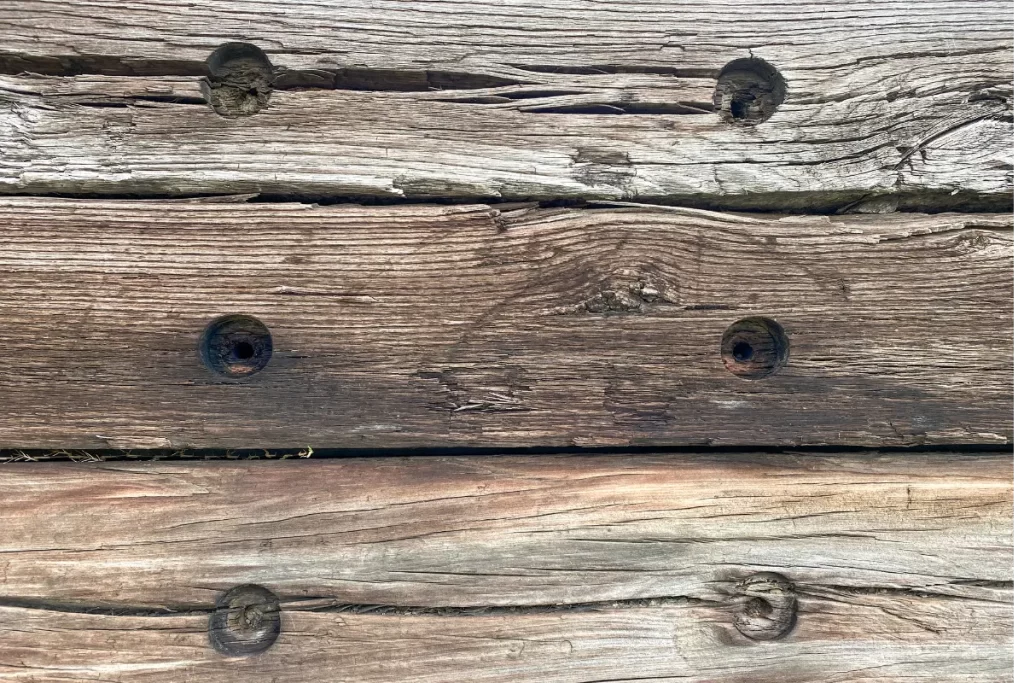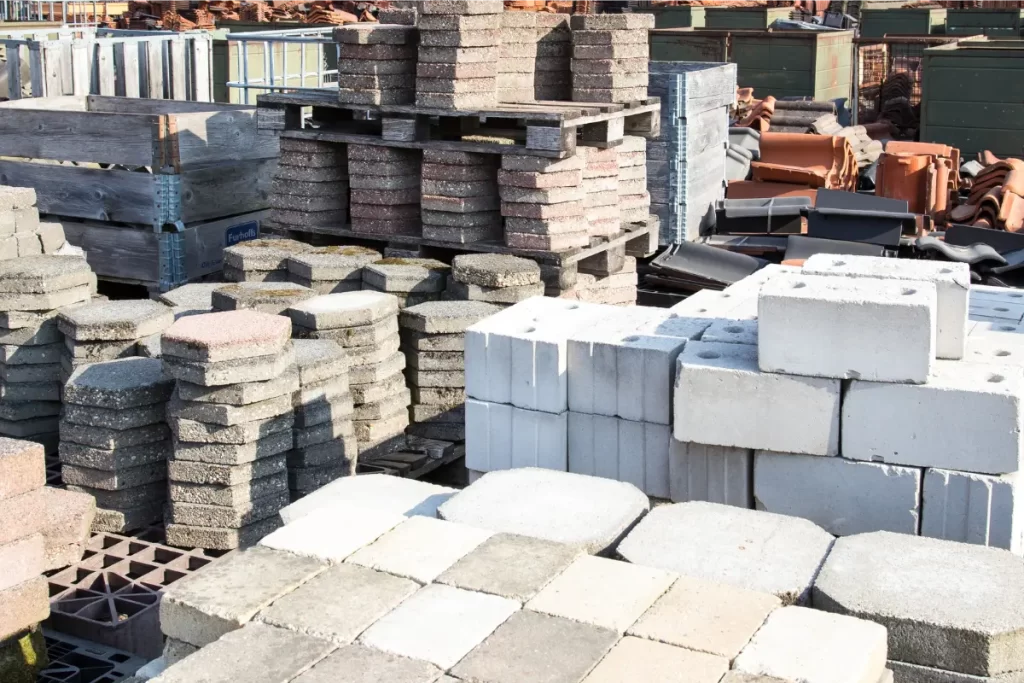Welcome to a world where discarded items are given a new lease on life and transform into something beautiful and functional. In this article, we will dive into the exciting realm of repurposed materials and discover how they can unlock the hidden potential in your home.
Repurposing is not just about recycling; it’s about creativity, innovation, and sustainability. By giving old materials a fresh purpose, you not only reduce waste but also add a unique charm and character to your living space.
Imagine having a coffee table made from reclaimed wood, a bookshelf crafted from vintage suitcases, or a chandelier created from discarded glass bottles. These repurposed treasures not only make a statement but also serve as conversation starters, giving your home a distinctive appeal.
Whether you are an eco-conscious homeowner, a DIY enthusiast, or simply someone looking to add a touch of personalization to their abode, the possibilities with repurposed materials are endless.
So, join us as we explore the world of repurposing and unlock the hidden potential that lies within these forgotten treasures. Get inspired and let your imagination run wild as you embark on a journey to transform your home into a unique haven of style and sustainability.

Benefits of using repurposed materials in home projects
Repurposing is not just about recycling; it’s about creativity, innovation, and sustainability. By giving old materials a fresh purpose, you not only reduce waste but also add a unique charm and character to your living space.
When you incorporate repurposed materials into your home projects, you contribute to a more sustainable and eco-friendly lifestyle. By using materials that would otherwise end up in landfills, you reduce the demand for new resources and minimize your carbon footprint.
Furthermore, repurposed materials often come with a story. They have a history and a sense of nostalgia that new materials simply can’t replicate. Each piece carries its own unique characteristics, adding a layer of authenticity and personality to your home.
Repurposed materials are also budget-friendly. Instead of splurging on expensive new furniture or decor, you can find hidden gems at thrift stores, salvage yards, or even in your own attic. With a little creativity and some DIY skills, you can transform these materials into stunning pieces that rival high-end designer items.
Using repurposed materials not only benefits the environment and your wallet but also allows you to create a home that is truly one-of-a-kind. The possibilities are endless, and the results are sure to impress.

Inspiring examples of repurposed materials in home design
Imagine having a coffee table made from reclaimed wood, a bookshelf crafted from vintage suitcases, or a chandelier created from discarded glass bottles. These repurposed treasures not only make a statement but also serve as conversation starters, giving your home a distinctive appeal.
Repurposed materials can be used in various ways throughout your home. In the living room, for example, you can create a focal point with a repurposed fireplace mantel or a unique wall art piece made from salvaged materials. In the bedroom, repurposed doors can be transformed into a headboard or a room divider, adding a touch of rustic charm.
The kitchen is another area where repurposed materials can shine. Old wooden crates can be repurposed as open shelving, while vintage mason jars can be used as storage containers or decorative accents. In the bathroom, you can turn an old dresser into a vanity or repurpose a ladder as a towel rack.
The key is to think outside the box and let your imagination run wild. With repurposed materials, there are no limits to what you can create. Each piece tells a story and adds a unique touch to your home’s design.
How to source repurposed materials for your home projects
Sourcing repurposed materials for your home projects can be an exciting treasure hunt. There are various avenues you can explore to find the perfect pieces for your design vision.
Start by checking out local thrift stores, antique shops, and flea markets. These places are often a goldmine for unique and affordable repurposed materials. Keep an open mind and be prepared to see the potential in items that may not look impressive at first glance.
Online marketplaces and classified ads are another great resource for sourcing repurposed materials. Websites like Craigslist, Facebook Marketplace, and eBay often have listings for salvaged materials, furniture, and decor items. Just be sure to thoroughly research and inspect the items before making a purchase.
Don’t forget to tap into your own network as well. Friends, family, and neighbors may have unwanted items that they are willing to part with. You never know what hidden treasures are lurking in someone else’s attic or garage.
When sourcing repurposed materials, it’s important to keep your design vision in mind. Look for materials that align with your style and can be easily incorporated into your home. Consider the size, condition, and functionality of the items before committing to a purchase.

Tips for incorporating repurposed materials into your home decor
Incorporating repurposed materials into your home decor requires a thoughtful approach to ensure a cohesive and harmonious design. Here are some tips to help you seamlessly integrate repurposed items into your space:
1. Balance old and new: Mix repurposed materials with modern elements to create a balanced and eclectic look. This juxtaposition adds visual interest and keeps your home from feeling dated.
2. Consider functionality: Repurposed materials should not only be visually appealing but also serve a purpose. Ensure that the items you choose are functional and practical for your everyday needs.
3. Create focal points: Use repurposed materials to create eye-catching focal points in each room. Whether it’s a statement piece of furniture or a unique wall installation, these elements will draw attention and become conversation starters.
4. Embrace imperfections: Repurposed materials often come with imperfections and signs of wear, which add charm and character to your home. Embrace these flaws and celebrate the history behind each piece.
5. Think beyond furniture: Repurposed materials can be used in various ways beyond furniture. Consider using salvaged doors as tabletops, old windows as wall decor, or vintage crates as storage solutions.
6. DIY with caution: If you’re considering DIY projects with repurposed materials, make sure you have the necessary skills and tools. Start with small projects and gradually work your way up to more complex endeavors.
By following these tips, you can seamlessly incorporate repurposed materials into your home decor, creating a space that is both visually stunning and sustainable.
DIY projects using repurposed materials
One of the most rewarding aspects of working with repurposed materials is the opportunity to get creative and embark on exciting DIY projects. Here are a few ideas to inspire your inner DIY enthusiast:
1. Pallet furniture: Transform wooden pallets into stylish and functional furniture pieces. From coffee tables to outdoor loungers, pallets offer endless possibilities for DIY projects.
2. Upcycled lighting: Create unique lighting fixtures by repurposing old mason jars, wine bottles, or even vintage kitchenware. These DIY projects add a touch of whimsy and ambiance to any room.
3. Repurposed planters: Turn vintage teapots, tin cans, or even old shoes into charming planters for your indoor or outdoor greenery. These repurposed planters add a touch of quirkiness to your space.
4. Salvaged wood shelves: Give old wooden planks a new life as rustic, floating shelves. These shelves not only provide extra storage space but also add a warm and inviting touch to any room.
5. Vintage suitcase storage: Stack vintage suitcases to create a unique storage solution. These repurposed suitcases can serve as side tables, nightstands, or even extra seating when needed.
Remember, the beauty of DIY projects using repurposed materials lies in the process itself. Enjoy the journey of transforming something old into something new and cherish the satisfaction of creating a one-of-a-kind piece for your home.

Repurposed materials for specific areas of your home – kitchen, bathroom, etc.
Repurposed materials can be used to enhance the design and functionality of specific areas in your home. Here are some ideas for incorporating repurposed materials into different rooms:
1. Kitchen: Use salvaged wood to create a unique kitchen island or repurpose old metal filing cabinets as storage solutions. Vintage kitchenware, such as colanders or graters, can be transformed into pendant lighting fixtures.
2. Bathroom: Repurpose old ladders as towel racks or use reclaimed wood to create a vanity countertop. Vintage mirrors, frames, or even windows can add a touch of character to your bathroom decor.
3. Living room: Create a statement wall using salvaged wood planks or repurpose old doors as unique coffee tables. Vintage suitcases can be stacked to create a side table or storage solution.
4. Bedroom: Repurpose old window shutters as a headboard or transform a vintage dresser into a bathroom vanity. Salvaged doors can be used as room dividers or as a backdrop for hanging plants.
Remember to consider the specific needs and style of each room when choosing repurposed materials. The goal is to create a cohesive and visually appealing space that reflects your personal taste and values.
Sustainable living and the role of repurposed materials in reducing waste
In today’s world, sustainable living has become more important than ever. By incorporating repurposed materials into your home, you actively participate in the movement to reduce waste and promote a greener lifestyle.
Repurposed materials play a crucial role in diverting waste from landfills. Instead of discarding items that are no longer needed, repurposing gives them a new purpose and extends their lifespan. This reduces the demand for new resources and minimizes the environmental impact of manufacturing new products.
In addition to reducing waste, repurposing also helps conserve energy and reduce greenhouse gas emissions. By opting for repurposed materials, you eliminate the need for energy-intensive manufacturing processes that contribute to pollution and climate change.
Furthermore, repurposing promotes a shift in mindset towards a more circular economy. It encourages us to think beyond the disposable culture and embrace the concept of reuse and upcycling. By valuing repurposed materials, we promote a culture of resourcefulness and creativity that benefits both the environment and our communities.
While repurposed materials may be just a small piece of the sustainable living puzzle, they serve as a tangible reminder of the power of individual actions. By choosing repurposed materials for your home, you become part of a larger movement towards a more sustainable future.

Challenges and considerations when working with repurposed materials
Working with repurposed materials can bring its own set of challenges and considerations. Here are a few things to keep in mind when incorporating repurposed materials into your home projects:
1. Quality and condition: Repurposed materials may come with wear and tear or structural issues. Ensure that the items you choose are still in good condition and can withstand the intended use.
2. Safety concerns: When repurposing items, it’s important to consider safety. Ensure that repurposed materials are free from harmful chemicals or substances that could pose a risk to your health.
3. Compatibility with existing decor: Repurposed materials should complement your existing decor and not clash with the overall aesthetic. Consider how the materials will fit into your space and whether they align with your design vision.
4. Availability and sourcing: Finding the right repurposed materials can sometimes be a challenge. Not all items may be readily available, and sourcing can require time and effort. Be patient and persistent in your search.
5. Skill level required: Some repurposed projects may require advanced DIY skills and tools. Assess your own abilities and choose projects that align with your skill level to ensure a successful outcome.
By being aware of these challenges and considerations, you can plan and execute your repurposed projects with confidence and avoid potential pitfalls.
Conclusion: Unlocking the hidden potential in your home with repurposed materials
Repurposed materials offer a world of possibilities for transforming your home into a unique haven of style and sustainability. By embracing creativity, innovation, and sustainability, you can unlock the hidden potential in your living space.
From the benefits of using repurposed materials to inspiring examples of repurposed materials in home design, we have explored the vast potential that lies within these forgotten treasures. Whether you are an eco-conscious homeowner, a DIY enthusiast, or simply someone looking to add a touch of personalization to their abode, repurposed materials offer endless opportunities for creating a space that is both visually stunning and environmentally responsible.
So, start your treasure hunt for repurposed materials, get inspired by the possibilities, and let your imagination run wild. With repurposed materials, you can transform your home into a reflection of your unique style and values. Embrace the charm, character, and sustainability that repurposed materials bring, and unlock the hidden potential in your home.
